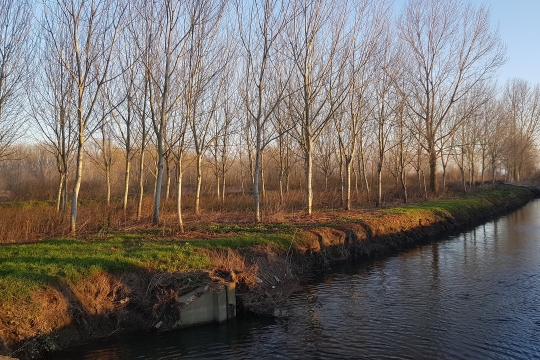It is widely believed that forests help improve water quality by reducing soil erosion (and hence reducing silt) as well as filtering out nutrients and pollutants carried in water, which allows the municipal drinking water supply sector to simplify or expedite many costly water treatment procedures and thereby save on operating costs. This study statistically quantifies such cost savings in the contexts of China’s Sichuan province, by analyzing how drinking water treatment costs change in response to changes in upstream forest cover. A primary novel contribution of this study is to measure the cost-saving effects delivered by forests at different distances upstream from the water intake point. The main findings are as follows.
- An increase in forest cover within 3km upstream of the water intake point is likely to reduce drinking water treatment costs. There is no statistical evidence for such cost-saving effects associated with forest cover in more distant upstream locations beyond the 3km radius. The country’s Ministry of Environmental Protection recommends that the primary and secondary drinking water protection areas should jointly cover at least a 3km radius upstream from a water intake point, which is in line with our result.
- The cost-saving effect of forest cover is likely to be moderate. My results suggest that a 1% increase in forest cover within 3 km upstream would reduce drinking water treatment costs by almost 0.02%. The annual total cost savings of all forest cover in the 3km radius amounts to 63 million yuan (USD 9.5 million). These results are smaller than the results of previous studies focusing on the tropics such as India and Malaysia, but are more comparable to the results from higher latitude regions such as France and Portugal.
- These findings have practical implications for forest conservation. In an attempt to conserve forests as a means of reducing drinking water treatment costs, it might be economically more worthwhile to focus on upstream forests within a certain radius of the water intake point, rather than overstretch efforts and resources to conserve all forests in the entire catchment.
- The study contributes to ecosystem services accounting, which is a process of assigning monetary values to natural resources, so that they can be considered along with industrial and agricultural production when balancing economic activity against environmental protection. In forest ecosystem services accounting, it has been common to assign the same value for water purification to the entire forest, instead of assigning different values for water purification that depend on how close an area of forest is to the water source.
This brief is based on: Valuing Water Purification Services of Forests: A Production Function Approach Using Panel Data from China's Sichuan Province, EfD Discussion Paper 20-29, August 2020, by Zhaoyang Liu, Department of Land Economy, University of Cambridge, UK.

